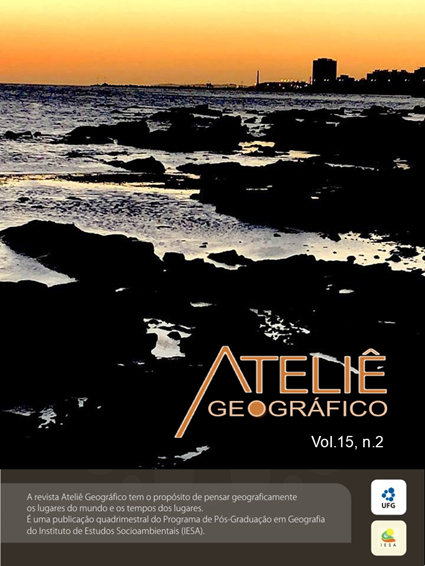From periphery and peri-urban to margin: understanding the space of expansion of the Latin American city
DOI:
https://doi.org/10.5216/ag.v15i2.69949Abstract
Previous works on the expansion of the Latin American cities are mostly based on theoretical and methodological perspectives arising from different socio-spatial contexts. However, a recent call has been made from postcolonial urban studies to open the understanding of the production of space from the Global South. Considering the above, an alternative theoretical-methodological proposal is presented, which could evidence the production of a space not recognized by the predominant categories used in the literature. In theoretical terms, differentiated spaces could be interpreted from the margin, understood as a space located outside a pre-existing totality; thus, allowing the production of new spatial forms. In terms of method, an analogical dialectical reasoning is proposed to identify the similarities and differences between the expansion space and the predominant categories used to interpret it. To achieve this, geographical space is studied from a perspective that integrates its physical and social dimensions. Finally, the methodology is presented taking as cases the city of Santiago, Chile and Morelia, Mexico.
Keywords: urban expansión; Latin American cities; margin; analogical-dialectical method; decolonial geography.
Downloads
Downloads
Published
How to Cite
Issue
Section
License
Autores que publicam nesta revista concordam com os seguintes termos:- Autores mantém os direitos autorais e concedem à revista o direito de primeira publicação, com o trabalho simultaneamente licenciado sob a Licença Creative Commons Attribution que permite o compartilhamento do trabalho com reconhecimento da autoria e publicação inicial nesta revista.
- Os autores não serão remunerados pela publicação de trabalhos na Revista Ateliê Geográfico. Além disso, os conteúdos publicados são de inteira e exclusiva responsabilidade de seus autores, ainda que reservado aos editores o direito de proceder a ajustes textuais e de adequação às normas da publicação.
- Autores têm permissão e são estimulados a divulgar seu trabalho online (ex.: em repositórios institucionais ou na sua página pessoal), já que isso pode gerar alterações produtivas, bem como aumentar o impacto e a citação do trabalho publicado (Veja O Efeito do Acesso Livre).


